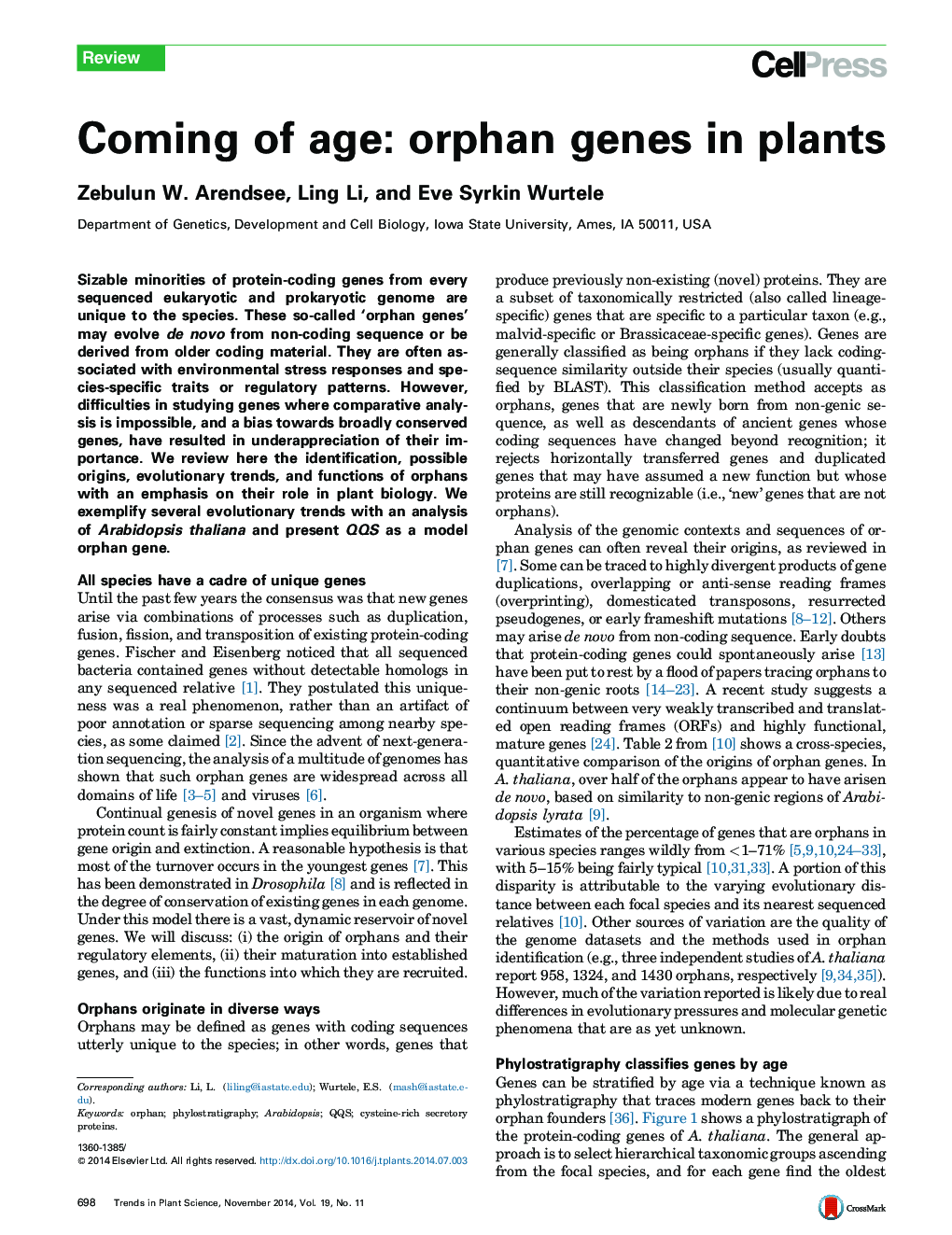| Article ID | Journal | Published Year | Pages | File Type |
|---|---|---|---|---|
| 2826093 | Trends in Plant Science | 2014 | 11 Pages |
•Genes with no trans-species similarity (orphans) appear in all sequenced genomes.•Some orphans become established in subsequent lineages.•As orphans mature, they tend to become more complex, connected, and functional.•Many orphans function in biotic/abiotic stresses and lineage-specific traits.•Some orphans link metabolic responses to environmental changes.•Some orphans are functional when introduced into evolutionarily distant species.
Sizable minorities of protein-coding genes from every sequenced eukaryotic and prokaryotic genome are unique to the species. These so-called ‘orphan genes’ may evolve de novo from non-coding sequence or be derived from older coding material. They are often associated with environmental stress responses and species-specific traits or regulatory patterns. However, difficulties in studying genes where comparative analysis is impossible, and a bias towards broadly conserved genes, have resulted in underappreciation of their importance. We review here the identification, possible origins, evolutionary trends, and functions of orphans with an emphasis on their role in plant biology. We exemplify several evolutionary trends with an analysis of Arabidopsis thaliana and present QQS as a model orphan gene.
